The Museum of Mural Painting is housed in a historic building considered to be the oldest house in Havana, on the gloomy Calle Obispo, in the historic center of the city. This museum brings together, explains, and encourages exploration of the diverse pictorial treasures found on the walls and facades of some of Old Havana's buildings both contemporary and those created during the city's various artistic periods. The foundation occupies the upper and lower parts of the house, including the entrance hall, the gallery, and the courtyard. The museum is equipped with various panels with historical information.
 |
| (The fortress is now a Shipwreck Museum) |
 |
| (The lookout tower is crown with weather vane, La Giraldilla) |
Plaza de Armas is a historic square in Old Havana. It is a significant landmark, known for its colonial architecture and as a central gathering place. The monument to Carlos Manuel de Céspedes was erected in 1955, replacing a statue of the unpopular Spanish king Ferdinand VII, symbolizing Cuba's path to independence. Carlos Manuel de Céspedes is known as the "Father of the Homeland," he was a Cuban sugar mill owner who freed his slaves in 1868 and initiated the Ten Years' War for Cuban independence from Spain.
 |
| (Carlos Manuel de Céspedes) |
 |
| (The entrance to the Palacio de los Capitanes Generales) |
 |
| (A worker replacing wooden brick in front of the palace) |
While taking photos of the street art of Old Quarter of Havana we found a statue of José María López Lledin, an elegant vagabond known as El Caballero de Paris who wandered the streets of Havana and was a well-known cult figure.
 |
| (Vibrant water colour paintings for sales) |
 |
| (A statue of José María López Lledin, an elegant vagabond) |
Walking in the hot summer sun around Havana Vieja was quite exhausting and we were drenched in sweat. We had a coffee break at one of the plaza cafe and watched people go about their businesses in Plaza de San Francisco de Asis.
 |
| (A church converted into Museum of Sacred Art and Concert Avenue) |
 |
| (Having a cup of coffee and a lot of water) |
 |
| (The statue of Frederick Chopin at Plaza San Francisco) |
 |
| (The statue of Eusebio Leal Spengler, a Cuban historian) |
 |
| (A gentleman smoking Cuban cigar) |
At Plaza Vieja we headed to the Camera Obscura, an optical device mounted atop a 1909 building that projects a real-time 360° view of the colonial streets below. There was a small entrance fee and a guide to explain the landmarks. There is a rooftop terrace with a panoramic view.
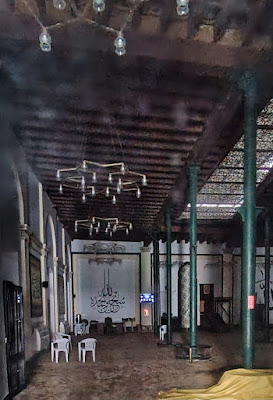 |
| (The interior view of the mosque) |
From the mosque we walked to the National Capitol of Cuba, also known as Capitolio Nacional de La Habana, a public edifice in Havana, the capital of Cuba. The building was commissioned by Cuban president Gerardo Machado and built from 1926 to 1929 under the direction of Eugenio Rayneri Piedra.
 |
| (A vintage car and the Capitol Building) |
At the end of the tour, we went to El Chanchullero Restaurant but it was full and the queue was long. Instead we went to a chick D' Lirios Restaurant located in front of the Capitol Building. Large portion of Caribbean and Cuban cuisines are served at D' Lirios. The unique characteristic of this place is the live baritone performance of their serving staff. It is considered to be one of the best restaurants in Havana and quite pricey.
 |
| (D' Lirios Restaurant, one of the best restaurant in town) |
 |
| (Having seafood dishes for lunch) |
We were back at our apartment for solat jamak before we went out again to explore the other parts of Havana. We rented two trishaws to Jose Marti Mercado for souvenirs hunting. There was a misunderstanding at the end of the ride. Unsurprisingly, we ended up paying double than the agreed rental rate. We were earlier warned of scammers, conmen and pick-pockets in the old.Havana.
 |
| (Kilometer 0 Cafe in the Old Quarters) |
 |
| (The park in front of our apartment) |
 |
| (Trishaws peddlers, beware of scammers) |
 |
| (The easy way to move around town) |
 |
| (Argument on the unfair price) |
Mercado de Artesania is a huge warehouse, sitting on the docks of Havana bay. It is home to numerous vendors who sell goods, artifacts, curios and paintings. Once you go here, you probably will have seen it all in the old town of Havana. Vendors know some English, most tourists will bargain, and some sellers will force you to buy their products so one has to be careful and agree on the price first. We bought some fridge magnets and duffel bags from here.
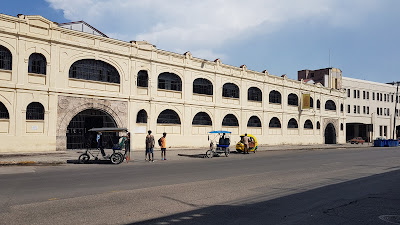 |
| (Mercado de Artesania was once a warehouse) |
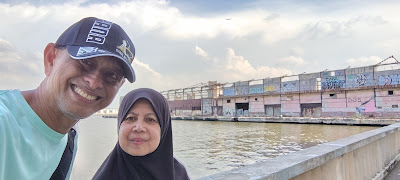 |
| (A huge warehouse by the Havana Bay) |
 |
| (Choosing souvenirs to bring home) |
 |
| (Fridge magnets and car number plates) |
 |
| (Memorabilia and Cuban t-shirts) |
Havana is full of history, and there is plenty to see besides Spanish architectures and attractions in the old city. From Jose Marti Mercado, we hired a Classic Car taxi for the afternoon tour to see the other part of Havana city. We had to cross the bay via Bahia de la Habana, to get to Casablanca on the other side of the harbour.
 |
| (1946 Chevrolet Stylemaster for our taxi tour) |
 |
| (Many vintage cars to choose from) |
 |
| (A Coco Taxi, a distinctive form of taxi only in Cuba) |
Our first stop was at the Plaza de La Revolucion where many political rallies take place and Fidel Castro and other political figures address Cubans. The square is dominated by the José Martí Memorial. Opposite the memorial are the offices of the Ministries of the Interior and Communications, whose facades feature matching steel memorials of the two most important deceased heroes of the Cuban Revolution: Che Guevara, with the quotation "Hasta la Victoria Siempre" (Ever Onward to Victory) and Camilo Cienfuegos, with the quotation "Vas bien, Fidel" (You're doing fine, Fidel).
 |
| (Cuba sign located near the historic Hotel Nacional de Cuba) |
 |
| (Cuba sign on the Malecon in Havana) |
Not far was the Fortaleza de San Carlos de la Cabaña, one of the Americas' largest colonial forts, built in the 18th century. Cannon‑firing ceremony is held here at 9 pm daily and could be seen from the Old Havana.
 |
| (The Fort of San Carlos de la Cabana) |
We visited the Christ of Havana, a majestic 20 m marble statue of Christ overlooking Havana Bay, sculpted in 1958 from Italian Carrara marble. There is a panoramic terrace perfect for sunrise or sunset city views.
 |
| (The Christ of Havana statue) |
 |
| (The panoramic view of Havana Harbor) |
Che Guevara's house is located near the Christ statue. Ernesto Guevara de la Serna, better known as El Ché, is one of the most important and symbolic figures during and after the Cuban Revolution. His likeness has become synonymous with revolutionary grit. It has transcended from his iconic heroism into a pop culture phenomenon whose image is used on everything from coffee mugs, ceramics, and pullovers - to statues, iron busts, and murals worldwide. Comandancia del Che is a Military History Museum. The museum includes a downed US plane from the Missile Crisis. There are many outdoor exhibits rich in Cold War history.
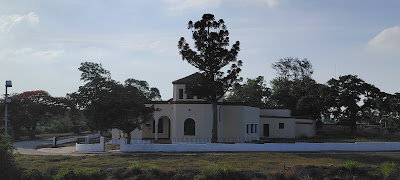 |
| (The house of Ernesto Guevara de la Serna) |
 |
| (The outdoor exhibits of cold war history) |
Back at the Home In La Habana we went for more souvenir hunting at the souvenir shops next to our apartment.


.jpg)
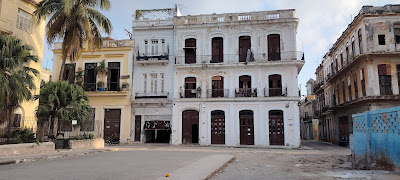



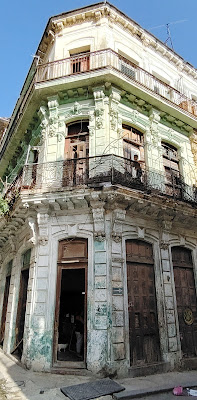








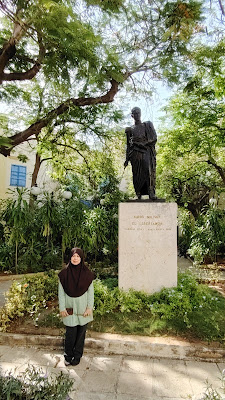





























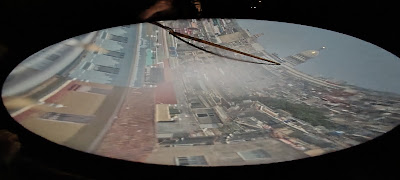






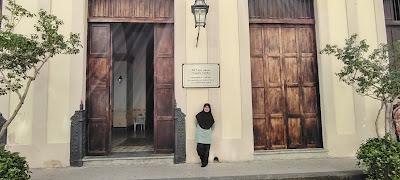






































No comments:
Post a Comment